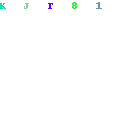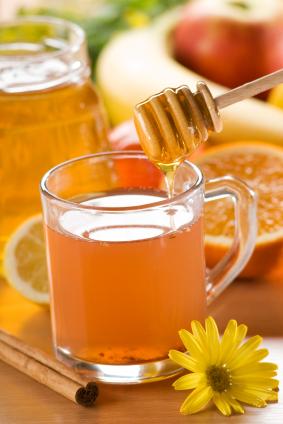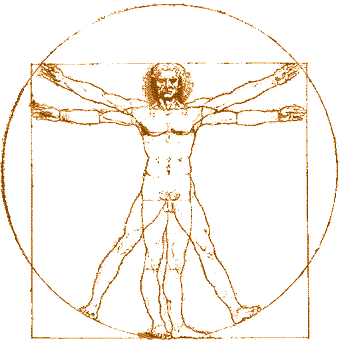Weight Loss Shakes Biography
Source:- Google.com.pkA proper breastfeeding diet is essential to production of nutritious mother’s milk for the newborn child. With a few simple tips, any mother can create a breastfeeding diet plan that will keep her healthy, her child well fed, and even aid in post-pregnancy weight loss.
Breastfeeding Diet: The Basics
The breastfeeding diet is similar to the diet prescribed for pregnancy. High-calorie and high-nutrition are the most important factors. The calorie intake should be approximately 500 calories above pre-pregnancy levels. Many of these calories should come from protein sources (approximately 1 gram for every pound of mother’s body weight), and mothers should continue taking pre-natal vitamins.
High calcium foods such as yogurt, cheese and milk should also be included. When choosing fruits and vegetables, a wide variety of colors are needed, and when choosing carbohydrates, whole grains are the best choice. Beverage consumption is also very important. Any breastfeeding diet plan should include plenty of water, milk and other nutritious beverages. The goal is 3 quarts of caffeine-free liquids per day.
Breastfeeding Diet: Affects on Breast Milk
There are foods known to affect the breast milk. Some of these foods may not agree with the newborn, and they should be avoided or the child’s reaction should be monitored for discomfort. Some of these foods are:
chocolate
spices
chili
citrus fruit
garlic
gassy vegetables (cabbage, brussels sprouts, broccoli)
Foods to Avoid
There are definite breastfeeding foods to avoid in any breastfeeding diet plan. Mothers should not consume any herbs or other supplements without a doctor’s consent. Mother’s should also abstain from fish with high levels of mercury. Alcohol, of course, should be avoided. While not a “food,” cigarettes should be avoided by nursing mothers. Cigarettes reduce breast milk production and can induce vomiting, restlessness, increases in heart rate, and diarrhea in the newborn. Sudden Infant Death Syndrome (SIDS) is also more often found in the children who have mothers that smoke.
Breastfeeding Diet and Weight Loss
The breastfeeding diet is primed for weight loss. There is no need for the nursing mother to decrease her calorie intake more then the recommended 500 calories above pre-pregnancy levels (unless instructed by a physician). The newborn ingests approximately 650 calories per day from breast milk. This creates 150 calorie deficiency in the mother while maintaining milk production for the child. The most important thing is that milk production remains in tact.
Mothers should not begin a weight loss plan for the first two months of the child’s life. If the mother follows a healthy breastfeeding diet, the most weight loss will be experienced in the first 3 to 6 months. The goal should be 1 pound per week after 6 months, to maintain health and energy levels.
Gentle exercise may be introduced and will not have any negative effects on the breast milk. In fact, women who begin exercise, after the suggested postpartum recovery time, experience higher milk production then mothers who do not exercise. Weight loss medications or supplements are not recommended.
is the most popular non-dairy milk alternative. Made from nutritiously dense soy beans, soy milk is naturally high in proteins, essential fatty acids and a variety of vitamins and minerals. Drinking soy instead of regular cow's milk provides your body with balanced nutrition without taking in the extra saturated fat and cholesterol associated with whole dairy. Soy milk is a drink of choice if you have high blood pressure, high cholesterol or other propensities for heart diseases. It is also a wonderful weight loss aid. Including soy milk as a part of your healthy diet plan can help suppress your appetite and promote more efficient metabolism.
Calories and Carbohydrates in Soy Milk
The most apparent advantage of soy milk over cow's milk in terms of weight loss is its reduced calorie and sugar content. One average cup of whole soy milk contains about 80 calories, which is even lower than most skim milk. Soy milk also has more quality carbohydrates than dairy milk. Dairy is high in lactose which accounts for the 12 grams of sugar in each serving. Soy contains only half of this amount. The rest of the soy carbohydrates are dietary fiber. One cup of soy milk provides 3 grams of fiber which meets 12% of your daily fiber need. Increasing your fiber intake can help maintain the feeling of fullness and speed up the transit of food through your digestive tract. If you drink skim milk for weight loss, you can avoid the watery taste and get the added benefits of fiber by switching to unsweetened soy milk.
Soy Can Help Reduce Body Fat
Unlike milk fat which is highly saturated and prone to form deposits, soy fat is good for you. The monounsaturated fat in soy milk not only prevents increase of blood fat, it also inhibits your intestinal fat and cholesterol absorption. The phytosterol in soy also has this fat blocking function. In essence, having soy milk in your diet lowers your actual exposure to dietary fat. You can drink full fat soy milk or eat snacks or desserts made with soy milk without feeling guilty.
Soy milk is also loaded with fat-burning vitamins. One cup of soy milk contains 30% of the recommended daily intake (RDI) of riboflavin and 50% RDI of vitamin B12. These two vitamins are both involved in energy production and are especially needed for fatty acid metabolism. Higher intake of these nutrients can help you burn off fat more efficiently which can be a tremendous help towards weight loss.
Build Lean Muscles with Soy Milk
Soy milk can deliver as much protein as dairy milk. Each cup of soy milk contains 7 grams of protein composed of all varieties of essential amino acids. In fact, soy protein is considered as one of the best sources of complete protein which provides all-around nutrition for healthy muscles, tissues and all your functional systems. Studies have shown that regular intake of soy products in addition to routine exercise can lead to reduced body fat and higher percentage of lean muscles.
Weight Loss Shakes Weight Loss Tips Tumblr For Women In Urdu By Dr Khurram In Urdu By Zubaida Tariq Urdu In Urdu For Girls And Tricks In Urdu By Doctor Khurram

Weight Loss Shakes Weight Loss Tips Tumblr For Women In Urdu By Dr Khurram In Urdu By Zubaida Tariq Urdu In Urdu For Girls And Tricks In Urdu By Doctor Khurram

Weight Loss Shakes Weight Loss Tips Tumblr For Women In Urdu By Dr Khurram In Urdu By Zubaida Tariq Urdu In Urdu For Girls And Tricks In Urdu By Doctor Khurram

Weight Loss Shakes Weight Loss Tips Tumblr For Women In Urdu By Dr Khurram In Urdu By Zubaida Tariq Urdu In Urdu For Girls And Tricks In Urdu By Doctor Khurram

Weight Loss Shakes Weight Loss Tips Tumblr For Women In Urdu By Dr Khurram In Urdu By Zubaida Tariq Urdu In Urdu For Girls And Tricks In Urdu By Doctor Khurram

Weight Loss Shakes Weight Loss Tips Tumblr For Women In Urdu By Dr Khurram In Urdu By Zubaida Tariq Urdu In Urdu For Girls And Tricks In Urdu By Doctor Khurram

Weight Loss Shakes Weight Loss Tips Tumblr For Women In Urdu By Dr Khurram In Urdu By Zubaida Tariq Urdu In Urdu For Girls And Tricks In Urdu By Doctor Khurram

Weight Loss Shakes Weight Loss Tips Tumblr For Women In Urdu By Dr Khurram In Urdu By Zubaida Tariq Urdu In Urdu For Girls And Tricks In Urdu By Doctor Khurram

Weight Loss Shakes Weight Loss Tips Tumblr For Women In Urdu By Dr Khurram In Urdu By Zubaida Tariq Urdu In Urdu For Girls And Tricks In Urdu By Doctor Khurram

Weight Loss Shakes Weight Loss Tips Tumblr For Women In Urdu By Dr Khurram In Urdu By Zubaida Tariq Urdu In Urdu For Girls And Tricks In Urdu By Doctor Khurram

Weight Loss Shakes Weight Loss Tips Tumblr For Women In Urdu By Dr Khurram In Urdu By Zubaida Tariq Urdu In Urdu For Girls And Tricks In Urdu By Doctor Khurram

Weight Loss Shakes Weight Loss Tips Tumblr For Women In Urdu By Dr Khurram In Urdu By Zubaida Tariq Urdu In Urdu For Girls And Tricks In Urdu By Doctor Khurram

Weight Loss Shakes Weight Loss Tips Tumblr For Women In Urdu By Dr Khurram In Urdu By Zubaida Tariq Urdu In Urdu For Girls And Tricks In Urdu By Doctor Khurram

Weight Loss Shakes Weight Loss Tips Tumblr For Women In Urdu By Dr Khurram In Urdu By Zubaida Tariq Urdu In Urdu For Girls And Tricks In Urdu By Doctor Khurram

Weight Loss Shakes Weight Loss Tips Tumblr For Women In Urdu By Dr Khurram In Urdu By Zubaida Tariq Urdu In Urdu For Girls And Tricks In Urdu By Doctor Khurram

Weight Loss Shakes Weight Loss Tips Tumblr For Women In Urdu By Dr Khurram In Urdu By Zubaida Tariq Urdu In Urdu For Girls And Tricks In Urdu By Doctor Khurram

No comments:
Post a Comment